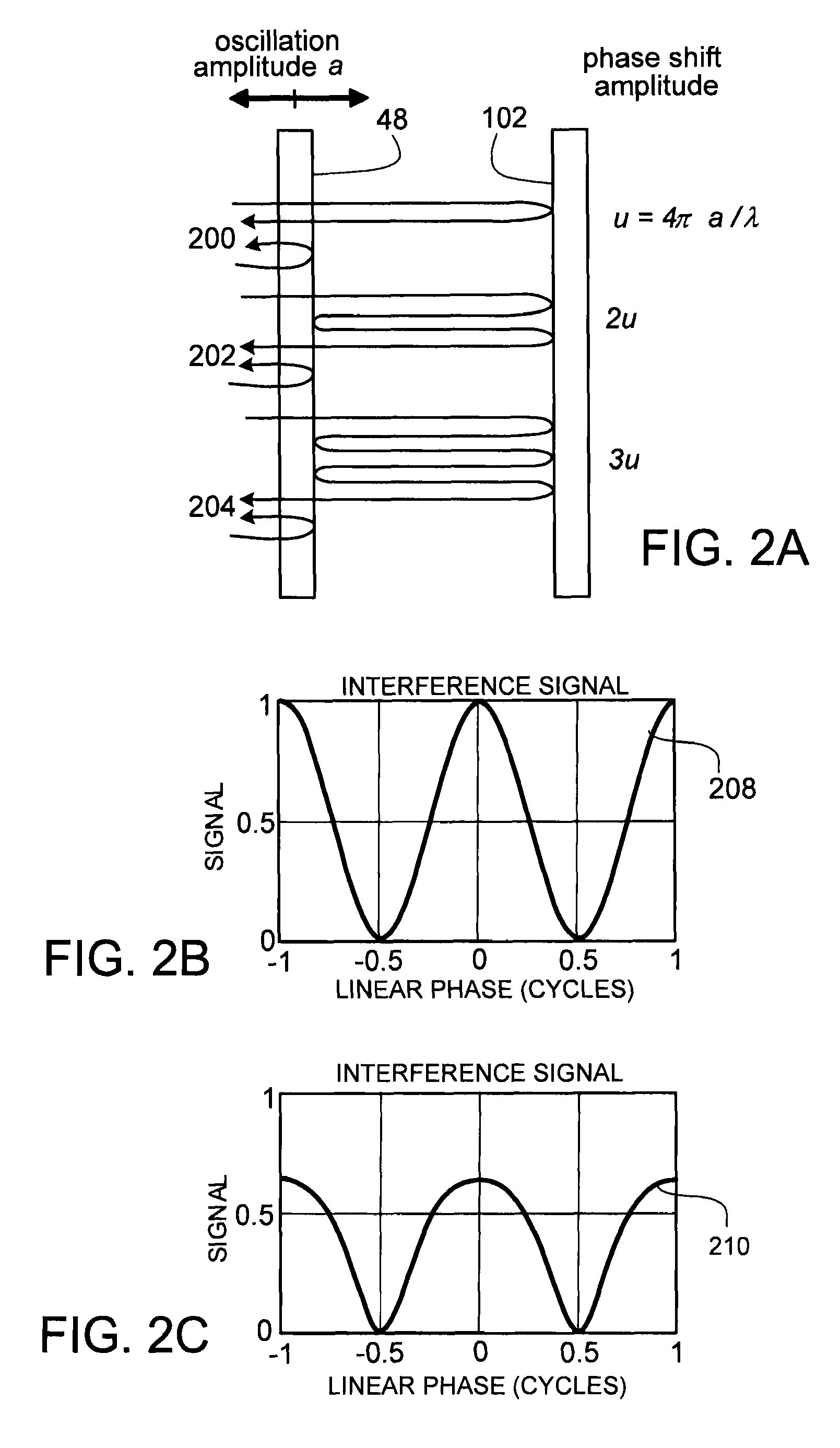Error compensation in phase shifting interferometry
a phase shifting and error compensation technology, applied in the field of phase shifting interferometry, can solve the problems of distorted interference signal, errors in phase determination, and various signal distortions of sinusoidal psi, and achieve the effects of improving interferometer design, improving performance, and being convenient to implemen
- Summary
- Abstract
- Description
- Claims
- Application Information
AI Technical Summary
Benefits of technology
Problems solved by technology
Method used
Image
Examples
Embodiment Construction
[0087]In FIG. 1, a schematic diagram of a phase-shifting interferometric system 10 is shown. Phase-shifting interferometric system 10 is adapted to measure the profile of a test surface 102 of a measurement object 100. Phase-shifting interferometric system 10 includes a light source 20 (e.g., a laser), a beam splitter 24, a collimating optic 28 for collimating light emitted from the light source, a Fizeau cavity 40 (e.g., a spherical cavity), a charge coupled device (CCD) camera 36, and an imaging optic 32 for imaging light exiting Fizeau cavity 40 onto camera 36. Phase-shifting interferometric system 10 includes further a controller 50 (e.g., a computer) and a frame grabber 52 for reading images detected by CCD camera 36.
[0088]Spherical-cavity Fizeau cavity 40 includes reference optics 42 mounted on a translatable stage 44. Translatable stage 44 is in communication with controller 50 through a driver 54. Spherical-cavity Fizeau cavity 40 includes further a mount 46 for positioning ...
PUM
 Login to View More
Login to View More Abstract
Description
Claims
Application Information
 Login to View More
Login to View More - R&D
- Intellectual Property
- Life Sciences
- Materials
- Tech Scout
- Unparalleled Data Quality
- Higher Quality Content
- 60% Fewer Hallucinations
Browse by: Latest US Patents, China's latest patents, Technical Efficacy Thesaurus, Application Domain, Technology Topic, Popular Technical Reports.
© 2025 PatSnap. All rights reserved.Legal|Privacy policy|Modern Slavery Act Transparency Statement|Sitemap|About US| Contact US: help@patsnap.com



